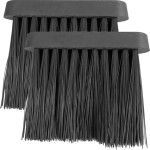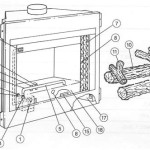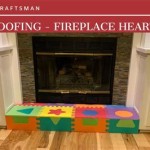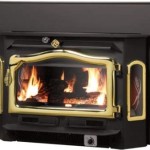Screened In Porch Fireplace: Extending Outdoor Living Beyond Summer
A screened-in porch offers a unique transition space between the indoors and outdoors, providing shelter from insects and some degree of weather protection. Adding a fireplace to a screened-in porch elevates this space from a seasonal retreat to a year-round extension of the home. A fireplace provides warmth, ambiance, and a focal point, transforming a simple porch into a cozy and inviting living area, regardless of the external temperature. The integration of a fireplace into a screened porch involves careful consideration of design, materials, safety regulations, and ventilation to ensure a functional and aesthetically pleasing addition.
The decision to install a fireplace on a screened-in porch is driven by a desire to maximize the usability of the outdoor space. In regions with distinct seasons, a screened porch can become unusable during colder months due to uncomfortable temperatures. A fireplace addresses this issue by providing a significant source of heat, allowing homeowners to enjoy the benefits of outdoor living even when the weather turns inclement. Furthermore, the presence of a fireplace enhances the aesthetic appeal of the porch, creating a warm and inviting atmosphere that is conducive to relaxation and entertainment.
Beyond the practical benefits of extending the usable season of a screened porch, a fireplace also offers a significant return on investment. By transforming the porch into a year-round living space, homeowners effectively increase the square footage of their homes and enhance the overall property value. Moreover, a well-designed and constructed fireplace can become a central feature of the home's outdoor entertainment area, attracting potential buyers who value outdoor living spaces.
Key Considerations for Screened In Porch Fireplace Design
Designing a screened-in porch fireplace requires careful planning to ensure it complements the existing structure and meets safety requirements. One of the primary considerations is the size of the porch. A large porch can accommodate a larger fireplace, while a smaller porch may necessitate a more compact design. The architectural style of the fireplace should also be consistent with the overall aesthetic of the home and the porch itself. This includes the choice of materials, such as brick, stone, stucco, or a combination thereof.
Ventilation is another crucial aspect of fireplace design for screened porches. Since the space is partially enclosed, proper ventilation is essential to prevent the build-up of smoke and carbon monoxide. A well-designed chimney or flue is necessary to ensure that smoke is effectively directed away from the porch. The height and diameter of the chimney should be determined based on the size of the fireplace and the local building codes. Consulting with a qualified contractor or fireplace professional is highly recommended to ensure that the ventilation system is adequate and meets all safety standards.
Fuel type is a significant design consideration. Wood-burning fireplaces often create a more traditional and rustic ambiance, while gas-burning fireplaces offer greater convenience and ease of use. Wood-burning fireplaces require a readily available source of firewood and regular cleaning to remove ashes. Gas-burning fireplaces, on the other hand, can be easily ignited and extinguished with the flick of a switch and produce no ash. The choice between wood and gas depends on personal preference and the desired level of maintenance.
In addition to the fireplace itself, the surrounding area should also be carefully designed. Seating arrangements, lighting, and landscaping can all contribute to the overall ambiance of the porch. Comfortable chairs, sofas, and outdoor rugs can create a cozy and inviting space. Strategically placed lighting can enhance the atmosphere and improve visibility at night. Landscaping elements, such as potted plants and climbing vines, can add a touch of nature to the porch.
Material Selection and Construction of a Screened In Porch Fireplace
The choice of materials for a screened-in porch fireplace should be guided by durability, aesthetics, and cost. Brick and stone are popular choices for their durability and classic appeal. Stucco is another option, offering a smooth and modern look. The materials should be weather-resistant to withstand the elements and require minimal maintenance.
The construction of a fireplace requires skilled craftsmanship and adherence to building codes. It is generally advisable to hire a qualified contractor or mason to handle the construction process. The foundation of the fireplace should be strong and stable to support the weight of the structure. The firebox should be constructed of fire-resistant materials, such as firebrick, to withstand the high temperatures. The chimney should be properly insulated to prevent heat loss and reduce the risk of fire.
For gas-burning fireplaces, a gas line must be installed by a licensed plumber. The gas line should be properly sized and installed according to local codes. A shut-off valve should be readily accessible in case of emergency. Regular inspections of the gas line are recommended to ensure safe operation.
When constructing a fireplace on a screened-in porch, it is important to consider the existing structure of the porch. The weight of the fireplace may require additional support to the porch's frame. The floor of the porch should be able to bear the weight of the fireplace and the surrounding seating area. If necessary, the porch floor may need to be reinforced to ensure structural integrity.
Safety Regulations and Ventilation Considerations for Screened In Porch Fireplaces
Safety is paramount when installing a fireplace on a screened-in porch. Local building codes typically specify minimum clearances between the fireplace and combustible materials, such as wood framing and screens. These clearances are designed to prevent the risk of fire. It is essential to consult with local building officials to ensure that the fireplace complies with all applicable regulations.
Carbon monoxide detectors should be installed in the porch area to detect the presence of this odorless and deadly gas. Regular maintenance of the fireplace and chimney is essential to prevent the build-up of creosote, which can increase the risk of chimney fires. The chimney should be inspected and cleaned annually by a professional chimney sweep.
Ventilation is critical for safe operation of a fireplace in a partially enclosed space. A properly designed chimney or flue is essential to exhaust smoke and combustion gases away from the porch. The height of the chimney should be sufficient to create adequate draft and prevent backdrafting. The diameter of the flue should be sized appropriately for the fireplace to ensure efficient ventilation.
In addition to the chimney, other ventilation measures may be necessary, such as installing vents in the porch walls or roof. These vents can help to circulate air and prevent the build-up of smoke and carbon monoxide. The placement of the vents should be carefully considered to maximize their effectiveness.
For gas-burning fireplaces, it is important to ensure that the gas supply is properly connected and that there are no leaks. A gas leak can create a fire hazard and pose a risk of explosion. Regular inspections of the gas line and connections are recommended to ensure safe operation. The fireplace should be equipped with a safety shut-off valve that automatically shuts off the gas supply in case of a malfunction.
Proper ventilation also helps to prevent the build-up of moisture on the porch, which can lead to mold and mildew growth. Mold and mildew can create health problems and damage the structure of the porch. Adequate ventilation can help to keep the porch dry and prevent these issues.
The use of a fireplace screen is highly recommended to prevent sparks and embers from escaping the firebox. A fireplace screen helps to contain the fire and protect nearby furniture and flooring from damage. The screen should be made of durable materials and fit securely in front of the firebox opening.
The installation of a screened in porch fireplace is a complex project that requires careful planning and execution. By considering the design, materials, safety regulations, and ventilation requirements, homeowners can create a beautiful and functional outdoor living space that can be enjoyed year-round.

How Much Does It Cost To Build A Fireplace In Screened Porch

Screened In Porch With Fireplace Screen It Is A Bladder Like House Designs Design

The Outdoor Great Room In East Cobb Greathouse Atlanta

Add A Screen Porch With Fireplace Kennesaw Ad B

A Beautiful Screened Porch In Nashville The Company

Screen Porch With Cozy Fireplace Archadeck Of Nova Scotia

Custom Screen Porch With Arrowhead Fireplace In Greer Sc

Screened Porch With Fireplace Design Ideas

Integrating An Outdoor Fireplace Into Your Nashville Screened Porch Design Archadeck Of

Screen Porch Designs Eby S Drafting And Design








